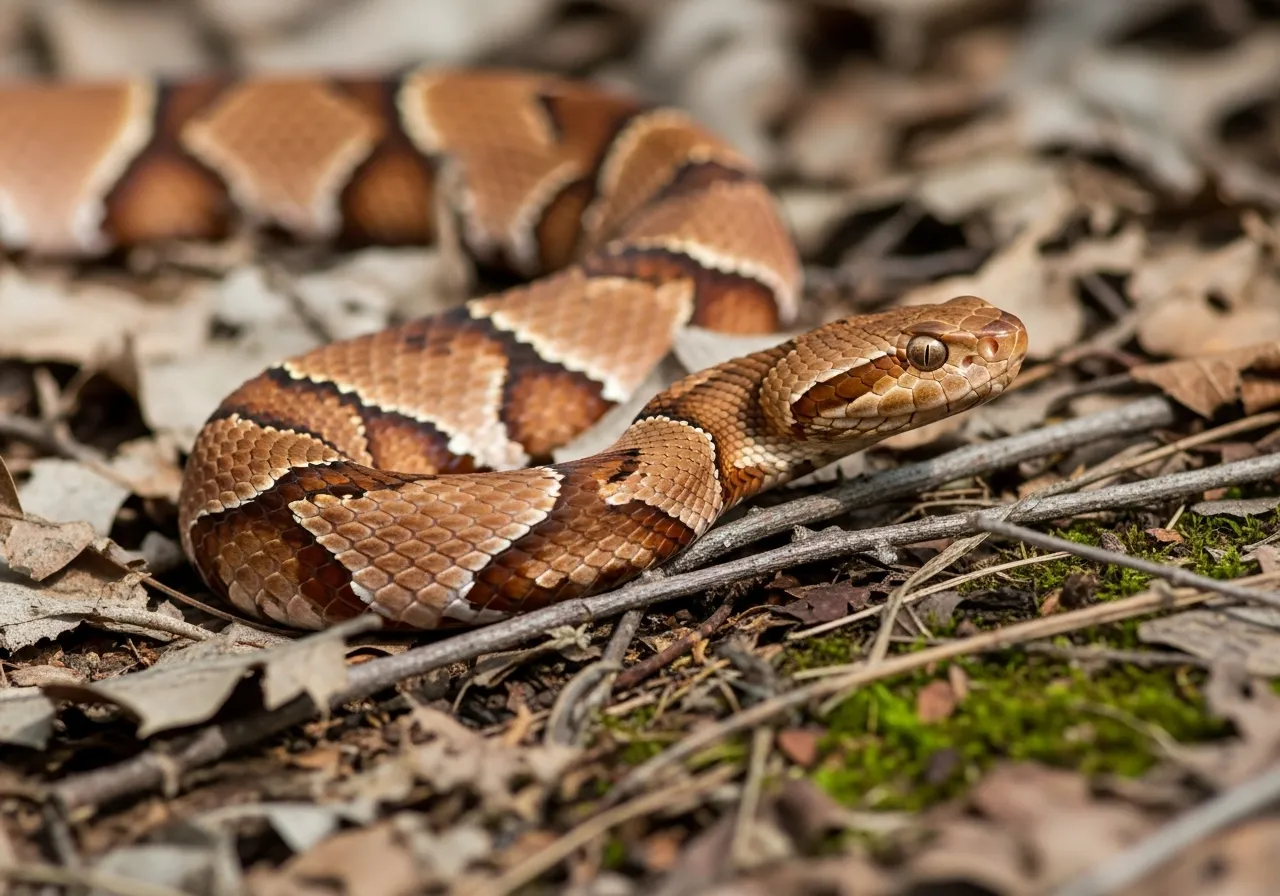
Venomous Snakes of North America: A Practical Guide
For readers in the United States, Canada, and Mexico, understanding local venomous species is far more practical than knowing about exotic snakes continents away. North America is home to two main families of venomous snakes: the Pit Vipers (family Crotalidae) and the Coral Snakes (family Elapidae).
Focus: Pit Vipers (Rattlesnakes, Copperheads, and Cottonmouths)
This is the largest group of venomous snakes in the Americas. They are named for the characteristic heat-sensing “pits” located between their eyes and nostrils, which allow them to detect warm-blooded prey. While these pits are a definitive feature, you should never be close enough to see them. Instead, rely on other, safer field marks.
Common Pit Viper Identification Features:
1. Triangular Head: Their heads are distinctly broad and arrow-shaped, much wider than their relatively narrow necks. This shape accommodates their large venom glands.
2. Elliptical Pupils: Like a cat’s eye, their pupils are vertical slits. In contrast, most non-venomous North American snakes have round pupils. Again, this is not a feature to check up close.
3. A Single Row of Scales Under the Tail Tip: After the anal plate, pit vipers have a single row of scales, whereas non-venomous snakes have a divided, double row. This is only useful on a shed skin.
A much safer and more practical way to identify these snakes is to learn the specific patterns of the species in your region. For example, the Copperhead (Agkistrodon contortrix) is known for its distinctive hourglass-shaped crossbands, which look like Hershey’s Kisses from the side. The Cottonmouth or Water Moccasin (Agkistrodon piscivorus) is a heavy-bodied, semi-aquatic snake known for its defensive gaping posture, revealing a bright white mouth lining.
Rattlesnakes (genera Crotalus and Sistrurus) are the most iconic of the group. Their segmented, keratin rattle is a highly effective warning system. Each time the snake sheds its skin, a new segment is added. However, you should never rely solely on hearing a rattle. A snake may have a broken rattle, or it may choose not to use it. Always identify a potential rattlesnake by its body pattern (diamonds, chevrons, or blotches), heavy body, and triangular head.
Focus: Coral Snakes (Genus Micrurus)
Coral snakes are relatives of cobras and mambas. They are slender snakes with small heads and are known for their brilliant bands of red, yellow, and black. Their venom is primarily neurotoxic. Unlike vipers, they don’t have hinged fangs; their fangs are small and fixed, and they must chew slightly to deliver a significant dose of venom. They are extremely secretive and bites are very rare, typically occurring only when one is handled.
The biggest challenge with coral snakes is distinguishing them from several harmless mimics, such as the Scarlet Kingsnake and the Milk Snake. This leads to one of the most famous—and potentially misleading—rhymes in the natural world: “Red on yellow, kill a fellow. Red on black, friend of Jack.”
Coral Snake vs. King Snake: A Critical Comparison
This rhyme describes the color pattern. On a venomous North American coral snake, the red and yellow bands touch each other. On the non-venomous mimics, the red and black bands touch. While this holds true for the three species of coral snakes found in the United States (the Eastern, Texas, and Arizona Coral Snakes), it is dangerously unreliable for coral snakes in other parts of the world, especially Central and South America. Furthermore, aberrant patterns can occur in any snake population.
The absolute safest rule is to never handle a brightly colored, ringed snake. However, for distant observation, here are two other subtle clues for U.S. species:
1. Snout Color: The U.S. coral snakes have a black snout. Their harmless mimics often have a red or whitish snout.
2. Ring Pattern: The colored rings on a coral snake encircle its entire body, including its belly. On many mimics, the pattern stops at the sides, and the belly is a uniform cream or white color.
Ultimately, the key to the coral snake vs king snake identification challenge is not memorizing rhymes but practicing a policy of universal respect and distance for all wildlife.















